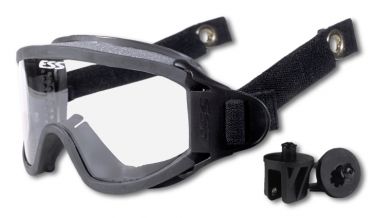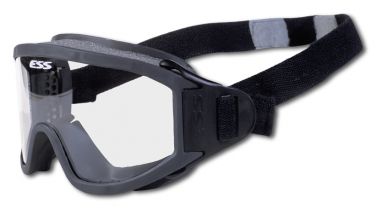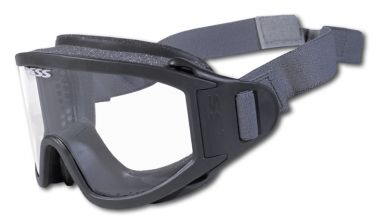|
Firefighting Goggles
A person's eyes are the last place to scrimp on money when
buying protective equipment for your firefighters. That is why we only stock ESS goggles that are designed for the professional.
Goggles are quickly becoming popular in the fire service.
People who have gotten something in their eyes at a scene, even though they had
their faceshield down, are especially fond of them.
Also, NFPA is promoting the use of goggles and may eventually standardize on
them. Goggles offer the ultimate in protection by totally surrounding
the wearer's eyes.

Structural Goggles IZ2
This is our best selling NFPA compliant goggle. The strap system allows
the user to store the goggles on the front or rear of the helmet or, the user
can simply snap them off when they are not needed. The goggle can be used
with or without the standard faceshield and even in conjunction with bourke
eyeshields. The entire perimeter of the goggle is heavily vented and
screened to maximize ventilation and minimize fogging.
 Structural Goggles IZ3 Structural Goggles IZ3
The same NFPA compliant goggle as shown above but with a full head strap.
The strap can be attached to the back of the helmet with velcro if desired and
is easily adjustable with gloved hands. The full-perimeter ventilation and
filtration system minimizes lens fogging and filters airborne particles,
dust, and debris. This configuration is recommended for use
without face shields.

Wildland Goggles
XTO
This goggle features a "speed strap" for quick, secure adjustment
while donning. Additionally, there are two velcro tabs sewn to the back of
the strap with mating adhesive backed tabs so the user can secure them to the
helmet. The point where the straps attach to the goggle is hinged.
This allows the wearer to even have bulky ear muffs on without distorting the
front piece and causing leaks. The roomy Striker frame is designed to fit
over most eyeglasses. The entire perimeter of the goggle is
heavily vented and the vents are covered by deep foam to prevent debris from
entering and still maintain enough ventilation to reduce fogging.
| 